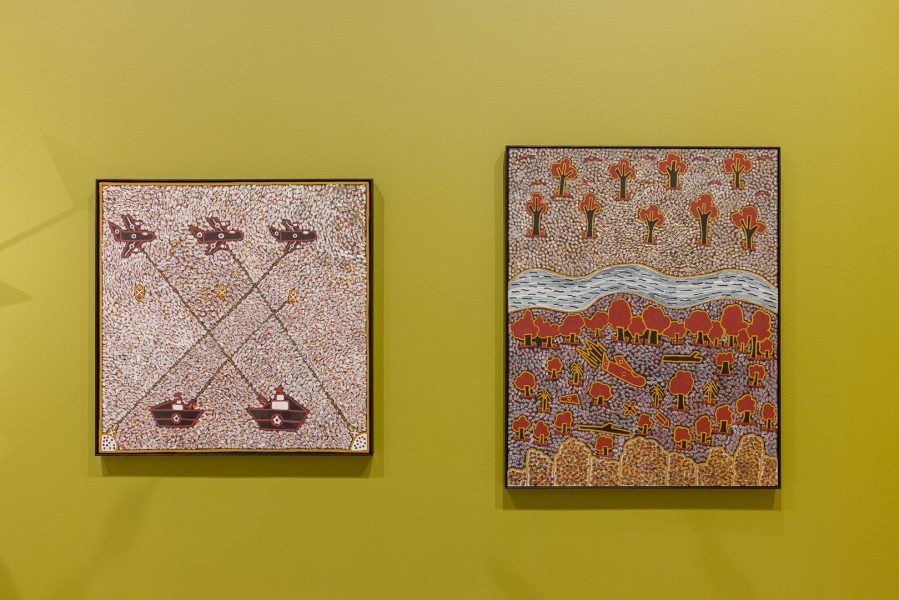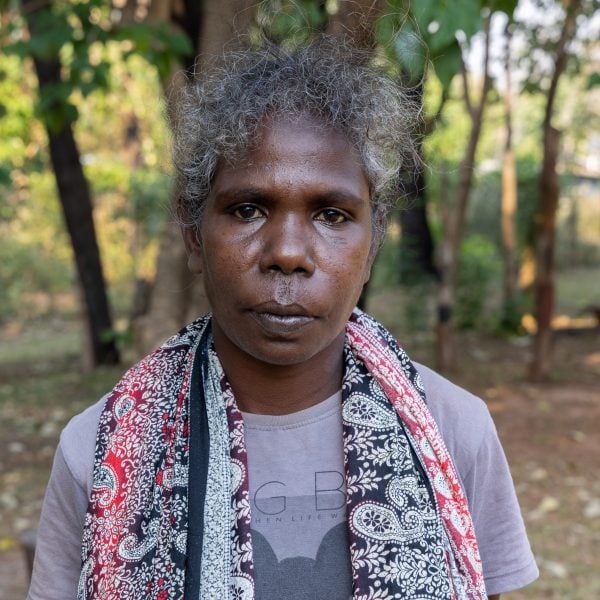Art Gallery of New South Wales
Bombing of Darwin 2023
locally sourced ochres on linen
Bombing of Darwin 2023
locally sourced ochres on linen
Commissioned by the Biennale of Sydney with generous support from a grant from Open Society Foundations and generous support from Vicki Olsson
Courtesy the artist and Jilamara Arts and Crafts Association
At the height of the Second World War, the Japanese pilot Hajime Toyoshima, returning from the bombing of Darwin in 1942, crash-landed on Melville Island on the same morning that 21-year-old Tiwi man Matthias Ulungura was out hunting. Pretending that the handle of his axe was the barrel of a gun, Ulungura told Toyoshima to ‘stick ’em up’ and delivered him to RAAF guards, who were stationed at Bathurst Island; the Tiwi Islands had been identified as a crucial line of defence by the Australian military. Ulungura was the first Australian to take a Japanese prisoner of war on Australian soil.
In 1982, the now legendary Ulungura welcomed the delivery of his granddaughter Pauletta Kerinauia. Kerinauia grew up hearing the stories of the significant contributions Tiwi people made to the war effort. Her work explores the immense impact that the bombings in Australia’s Top End had on her community – in particular, the Darwin bombing, which has become an iconic Tiwi yoyi (dance). Kerinauia provides insight into the living cultural narratives of the Tiwi people, told through song, dance and painting karri parlingarri kapi ningani (from creation time to today).


